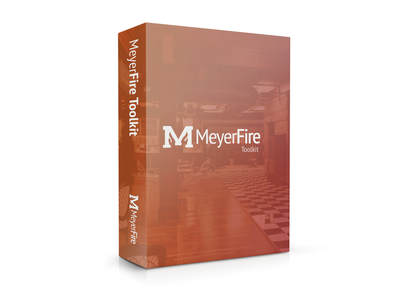|
We are working on a new addition to an existing high school. Part of the addition is a new auditorium with a full stage. The stage will be the highest hazard and our calculation area, Ordinary 2. The stage will also have (2) 1-1/2" hose stations with fog nozzles, one on each end, north and south, to protect the stage. They will be supplied from the same fire sprinkler system protecting the stage.
Do we need to include the hose station(s) discharge in the hydraulic calculations? If so, what would be the flow criteria from those hose connections, and is that separate from the outside hose allowance or part of it? Thanks all for your input. Submitted anonymously and posted for discussion. Discuss This | Submit Your Question | Subscribe
6 Comments
DL
8/13/2020 11:34:35 am
This is a timely question for me, as I am dealing with a lot of these lately, so I’m really looking forward to additional input or corrections. There are a couple “it depends” factors including which code the requirement is derived from. IBC 905.3.4 requires stages greater than 1,000 sg. ft. to be equipped with a Class III wet standpipe system with 1-1/2” and 2-1/2” hose connections on each side of the stage. However the exception below it allows a 1-1/2” connection per NFPA #13 (can someone confirm if this implying ONLY one is required?), or in accordance with NFPA #14 for Class II or III standpipes. (The Standpipe chapter of NFPA #101 has similar language.) I believe it would be an added inside hose stream standpipe allowance, OR, if using the NFPA #13 option (which is more likely), it would be 50 gpm for each of the two hose stations flowing at the available supply pressure. I assume added to the applicable sprinkler demand, but perhaps someone can confirm this. I have had the local AHJ on specific projects modify these requirements, such as not wanting a valve with reducing cap, but no hose. Over the years there have been NFSA informal interpretations related to the topic. I am guessing these are in the new MeyerFire NFSA EOD book.
Reply
DL
8/13/2020 11:58:48 am
Regarding my observation above under the exception that hose stations per NFPA #13 may be utilized in a sprinklered building, and whether or not it is implying only ONE hose station is required - Per the 905.3.4 commentary in the IFC (2015):
Reply
Jonathan Joseph
8/13/2020 11:45:36 am
NFPA 14 2016 7.8.1 A minimum residual pressure for 1 1/2 hose connection shall be 65 psi
Reply
Ivonn
8/13/2020 01:00:32 pm
If the hose connections are conected to the sprinkler system, that connections are considered a part of the fire sprinkler system, not a standpipe system. These hose connections are frequently called “standby hose” connections in my opinion or interpretation, these hose stations are not a standpipe so don't need comply with the requirements of NFPA 14 for standpipe systems,
Reply
Jonathan Joseph
8/13/2020 04:17:51 pm
Thanks for clearing that up Ivonn!
Reply
sean
8/17/2020 08:55:49 am
hose stations per NFPA 13 require the allowance to be added in the sprinkler calculation.
Reply
Leave a Reply. |
ALL-ACCESSSUBSCRIBESubscribe and learn something new each day:
COMMUNITYTop June '24 Contributors
YOUR POSTPE EXAMGet 100 Days of Free Sample Questions right to you!
FILTERS
All
ARCHIVES
July 2024
PE PREP SERIES |
MeyerFire
- Blog
- Forum
-
THE TOOLKIT
- SUBMIT AN IDEA
- BACKFLOW DATABASE*
- CLEAN AGENT ESTIMATOR*
- CLOUD CEILING CALCULATOR
- DOMESTIC DEMAND*
- FIRE FLOW CALCULATOR*
- FIRE PUMP ANALYZER*
- FIRE PUMP DATABASE*
- FRICTION LOSS CALCULATOR
- HANGER SPACER*
- IBC TRANSLATOR*
- K-FACTOR SELECTOR*
- NFPA 13 EDITION TRANSLATOR ('19 ONLY)
- NFPA 13 EDITION TRANSLATOR ('99-'22)*
- LIQUIDS ANALYZER*
- OBSTRUCTION CALCULATOR
- OBSTRUCTIONS AGAINST WALL*
- PITOT CONVERTER
- PLUMBING FIXTURE COUNTS
- QUICK RESPONSE AREA REDUCTION
- REMOTE AREA ANALYZER*
- SPRINKLER DATABASE*
- SPRINKLER FLOW*
- SYSTEM ESTIMATOR*
- TEST & DRAIN CALCULATOR
- THRUST BLOCK CALCULATOR
- TRAPEZE CALCULATOR
- UNIT CONVERTER
- VOLUME & COMPRESSOR CALCULATOR
- WATER STORAGE*
- WATER SUPPLY (US)
- WATER SUPPLY (METRIC)
- UNIVERSITY
- PE Exam
- LOGIN
- PRICING
- OUR CAUSE

MeyerFire.com is a startup community built to help fire protection professionals shine.
Our goal is to improve fire protection practices worldwide. We promote the industry by creating helpful tools and resources, and by bringing together industry professionals to share their expertise.
MeyerFire, LLC is a NICET Recognized Training Provider and International Code Council Preferred Education Provider.
All text, images, and media Copyright © 2016-2024 MeyerFire, LLC
We respect your privacy and personal data. See our Privacy Policy and Terms of Service. The views, opinions, and information found on this site represent solely the author and do not represent the opinions of any other party, nor does the presented material assume responsibility for its use. Fire protection and life safety systems constitute a critical component for public health and safety and you should consult with a licensed professional for proper design and code adherence.
Discussions are solely for the purpose of peer review and the exchange of ideas. All comments are reviewed. Comments which do not contribute, are not relevant, are spam, or are disrespectful in nature may be removed. Information presented and opinions expressed should not be relied upon as a replacement for consulting services. Some (not all) outbound links on this website, such as Amazon links, are affiliate-based where we receive a small commission for orders placed elsewhere.













 RSS Feed
RSS Feed
